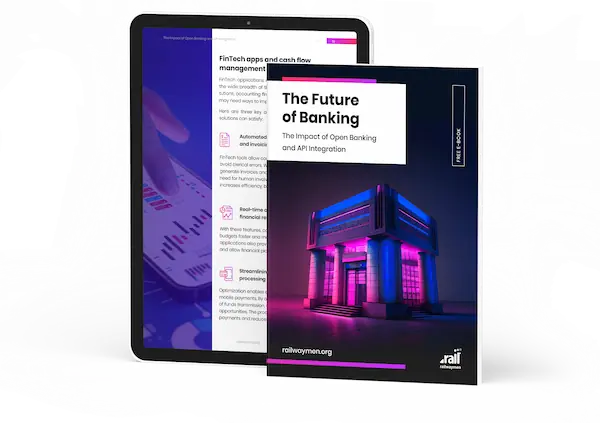The food service industry is constantly looking for unique solutions that are able to combine the digital world with the services provided. In the digital era, the ability to order food quickly and to provide convenient forms of payment are proving crucial for customers. To meet the expectations of the modern consumer, entrepreneurs are taking braver steps. One of them is the increasing implementation of digital wallets into dedicated applications. How does this functionality translate into user experience? Does the integration of digital solutions translate into business benefits?
The Growing Role of Artificial Intelligence in Food Service Industry
There is not a day nowadays when there is not a mention of an innovative application of AI in the public space. Artificial Intelligence has become a discovery on the scale of the steam engine. We are now participating in a race in which everyone wants to create a revolutionary solution using the capabilities of the mentioned discovery. Representatives of the food service industry have also joined this technological competition. All in an effort to run their businesses even more efficiently. Streamlining processes, reducing costs or automating work are just a few of the factors that motivate change. That is why I decided to check to what extent the delight in AI is the result of a herd mentality and to what extent the desire to achieve a competitive advantage and generate more profits.
Mastering SaaS Pricing Models: A Guide to Strategic Revenue Growth
One of the most important elements of building a SaaS business is choosing a pricing strategy. Pricing is what determines customer acquisition, retention and profitability. They are the foundation for success in the SaaS model business environment. However, the choice of strategy depends on several factors. It is not enough to simply identify the first best strategy. It is crucial to understand customer behavior, product value and market position.
At a time when the SaaS market is growing rapidly and becoming increasingly competitive, pricing strategies play a key role in differentiating offerings. They affect not only revenue streams, but also brand perception and customer loyalty. With an in-depth understanding of these dynamics, you can navigate the complexities of pricing to drive sustainable growth.
So let's take a look at the commonly known SaaS pricing models, analyzing the details they hide. Regardless of your company's stage of development, such knowledge can contribute to a better approach in pricing.
Everything you need to know about IFC: the core of BIM compatibility
The construction and the area responsible for design have gained a lot with the advent of BIM modeling. As we recently wrote in our blog, this is a transformational approach to project management. It puts every stage of the activities undertaken, from design to maintenance, under control. For BIM to be responsible for success, data sharing is key. It should take place between the parties involved and the software tools chosen. Thus, a large responsibility for this is attributed to the Industry Foundation Classes (IFC) format .
In this article, I decided to lean a little more into IFC. It's a key standard in the BIM ecosystem. That's why it's worth seeking out industry knowledge regardless of your level of familiarity with BIM methodologies. It's all about understanding what potential there is in construction using IFC standards. So sit back and enjoy your reading!
How Custom Software Solutions Drive Growth in Construction?
The construction industry has taken an incredible leap in development over the years. Modern projects enjoy the benefits of the latest technologies. But, implementing them presents many challenges that must be overcome. Many of them struggle with management inefficiencies, which are related to outdated processes. Another blocker can be communication problems between stakeholders. Misunderstanding of process flows also translates into problems with bidding complexity. These manifest themselves in bidding errors or in the accuracy of evaluations. This time I have decided that I will discuss how Railwaymen is making it easier for contech companies to overcome these obstacles.
Enhancing Construction Efficiency with 4D BIM
The construction industry is one of the most demanding for efficiency and precision. Focusing on details often determines the outcome of a project. They affect the project budget, completion time and adherence to quality standards. Modern operations are moving away from traditional construction planning methods only. Pen and paper are still important, but advanced digital systems regularly complement them. One of the current trends in contech is 4D construction planning, which I will attempt to introduce.
Efficient Online Payments: The Profits of Integrating the MPG
Moving fixed services to the network requires ensuring the highest security standards. This is especially true for financial services. Secure and smooth online operations are a key factor for customers. Thus, financial institutions are looking for suitable payment solutions to meet these needs. In response to these challenges, Railwaymen has successfully partnered with Moyasar. We have integrated the MPG (Moyasar Payment Gateway) system from our partner into our projects several times. The combination of our technical skills with a high-quality solution from Moyasar proved to be an ideal move. This is confirmed by customers whose financial services have gained in security and quality.
How Mobile Apps are changing the Foodservice Industry?
The food service industry is one of the most rapidly growing lines of modern business. Recent years have been marked by digital transformation. Changing consumer habits by making it possible to order food from mobile apps has made existing processes simpler. Improvements have introduced new efficiencies that were unimaginable a decade ago. In this article, I decided to look at what changes the food service industry has undergone in recent years. I will also describe what role mobile apps played in these transformations.
Why Ruby on Rails is Perfect for Building MVP?
When building a Minimum Viable Product (MVP), companies want a framework that is quick, efficient, and easy to scale. Each of these features is very important, so not all frameworks can meet the expectations of customers and developers. Among the available tools, one worth paying attention to is Ruby on Rails. For many years, developers have used Ruby on Rails to quickly turn ideas into a product. In this article, you will learn why to choose Ruby on Rails for MVP and explore the benefits of using it in a project. You will also learn why Rails is startup-friendly.
Cross-Platform vs. Native Mobile Development
Digital transformation of an enterprise is a challenge that requires many key decisions. One of them is choosing between cross-platform and native mobile development. This choice should not be solely dictated by the quality of the product or service. It is worth noting how companies engage with their customers. Observing whether their digital solutions meet user expectations can also provide valuable insights.

%20(1).jpg)













